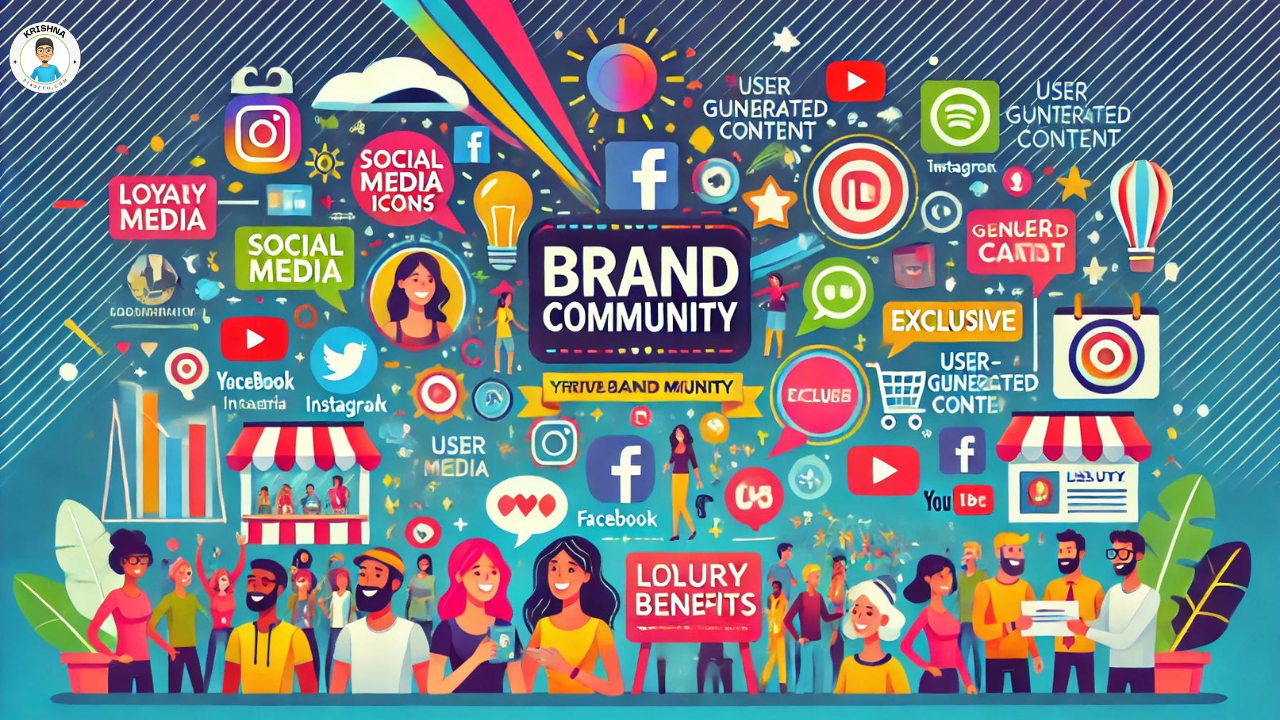
In today’s competitive market, building a loyal customer base is more important than ever. One of the most effective ways to foster brand loyalty is by creating a strong community around your brand. A brand community not only encourages repeat business but also transforms customers into brand advocates. This article explores engaging strategies to build a community and enhance brand loyalty.
The Brain Behind the Brand:Boosting Digital Marketing Leads
Understanding Brand Communities
What is a Brand Community?
A brand community is a group of customers who are connected by their admiration and loyalty to a brand. This community can interact with the brand and with each other, sharing experiences and supporting the brand’s mission.
- Example: Harley-Davidson has a passionate community of riders who participate in events, share stories, and promote the brand enthusiastically.
Why Are Brand Communities Important?
Brand communities create a sense of belonging and trust among customers. They enhance customer experience, increase engagement, and drive long-term loyalty.
- Real Data: According to research by Bain & Company, customers who engage with a brand’s community spend twice as much as those who don’t.
Strategies to Build and Engage a Brand Community
Create Valuable Content
Content is the cornerstone of community engagement. Share valuable, relevant content that resonates with your audience’s interests and needs.
- Example: Patagonia’s blog features articles on environmental activism and outdoor adventures, aligning with their customers’ values.
Use Social Media Platforms
Social media is a powerful tool for building and nurturing a brand community. Use it to connect with your audience, share content, and foster conversations.
- Example: Utilize platforms like Facebook, Instagram, and Twitter to host live Q&A sessions, share user-generated content, and create groups or forums for discussions.
Host Events and Meetups
Organize events, both online and offline, to bring your community together. These events can help strengthen connections and create memorable experiences.
- Example: Apple hosts annual events like WWDC (Worldwide Developers Conference) to engage their community and showcase new products.
Leverage User-Generated Content (UGC)
Encourage your community to create and share content related to your brand. UGC is authentic and can significantly boost engagement.
- Example: Starbucks’ #RedCupContest encourages customers to share photos of their holiday-themed cups, generating buzz and engagement.
Offer Exclusive Benefits
Reward your loyal community members with exclusive benefits such as discounts, early access to products, or special content.
- Example: Amazon Prime offers members benefits like free shipping, exclusive deals, and access to streaming services, fostering loyalty.
Fostering Interaction and Engagement
Encourage Feedback and Participation
Invite your community members to provide feedback and participate in discussions. Show that you value their opinions and are willing to make changes based on their input.
- Example: Conduct surveys, polls, and feedback sessions to gather insights and improve your offerings.
Provide Excellent Customer Service
Exceptional customer service can turn satisfied customers into loyal community members. Respond promptly and helpfully to inquiries and issues.
- Example: Zappos is renowned for its customer service, often going above and beyond to ensure customer satisfaction.
Create a Loyalty Program
Develop a loyalty program that rewards customers for their engagement and purchases. This can incentivize repeat business and long-term loyalty.
- Example: Sephora’s Beauty Insider program offers points for purchases, exclusive products, and access to events, enhancing customer loyalty.
Measuring Success and Adapting Strategies
Track Engagement Metrics
Monitor key metrics such as participation rates, content shares, and feedback to measure the success of your community-building efforts.
- Example: Use tools like Google Analytics and social media insights to track engagement and adjust your strategy as needed.
Gather and Analyze Feedback
Continuously gather feedback from your community to understand their needs and preferences. Use this information to refine your strategies and enhance engagement.
- Example: Regularly ask for feedback through surveys and direct interactions, and make data-driven decisions based on the insights collected.
Case Studies of Successful Brand Communities
Case Study 1: LEGO Ideas
Scenario: LEGO created an online platform where fans can submit and vote on new product ideas.
- Result: This community-driven approach not only boosts engagement but also brings innovative products to market, strengthening brand loyalty.
Case Study 2: Nike Running Club
Scenario: Nike offers a mobile app that connects runners, providing them with training plans, challenges, and a community to share their progress.
- Result: The app enhances customer experience, promotes brand engagement, and fosters a loyal community of runners.
Conclusion: Building a Thriving Brand Community
Building a brand community is a powerful way to foster loyalty and drive engagement. By creating valuable content, leveraging social media, hosting events, encouraging UGC, and offering exclusive benefits, you can build a thriving community around your brand. Continuously measure success, gather feedback, and adapt your strategies to meet the evolving needs of your community. Embrace the power of community to transform customers into loyal advocates and drive long-term success.

